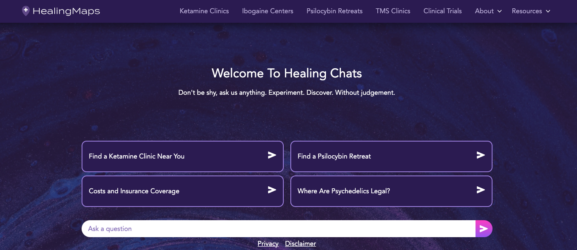How To Make Changa And Some Common Herb Blends
To make changa, you first want to extract DMT from Mimosa hostilis root bark. Next, you want to acquire all the herbs you want to use, which should include caapi (or perhaps Syrian rue seeds).
Here are the materials you need and the steps you should follow.
Changa Materials
- 250 mg of mullein leaf (it’s highly absorbent). If using another herb, you’ll need more.
- 500 mg of DMT
- 500-750 mg of harmala alkaloid freebase (which can be extracted from caapi or Syrian rue)
- 20 ml of the highest purity ethanol available (preferably 80+ percent grain alcohols, such as Everclear). Make sure it is not a denatured alcohol used in chemical applications as these contain toxic alcohols or extremely bitter compounds.
- 2 small jars or shot glasses
Instructions
- Pour out 20 ml of ethanol and place it in the shot glass or jar
- Measure out 500 mg of DMT and place it in the ethanol. If it doesn’t immediately dissolve, then carefully warm the liquid by placing it in a jar and submerging it in warm/hot liquid.
- Measure out 500-750 mg of harmala alkaloids and dissolve them the same way as you did with the DMT
- Measure out 250 mg of mullein
- Pack the leaf into the bottom of another shot glass or small jar
- Pour the DMT-harmala-infused alcohol into the packed shot glass or jar until completely soaked. Then place this on a plate or baking tray and spread it evenly. This gives the mixture more air, allowing it to completely evaporate. No trace of the alcohol will be left.
- Let the blend completely dry on the plate or baking tray. It should smell floral and fresh.
If you want a less potent blend, you can try using 350 mg or 250 mg of DMT.
Ready to explore a new horizon in mental health? Try out the beta version of HealingChat, HealingMaps AI chatbot that takes all our vetted content, clinics and retreats to answer all your questions in a safe environment. Try the beta version now!
RELATED: Here’s a Step-By-Step Guide on How to Smoke Changa
Herbs You Can Mix with Changa
The herbs that you can use in changa blends vary in their flavors, smoothness, and effects.
Here is a list of common herbs used in changa recipes:
- Damiana
- Blue/pink/white lotus (flower petals)
- Passionflower
- Peppermint
- Brugmansia
- Eucalyptus
- Mint
- Mullein
- Yerba mate
- Skullcap leaf
- Lemon balm
- Calea zacatechichi (Dream herb)
- Chaliponga leaf
- Chamomile petals
- Jasmine flowers
- Agrimony
- Lavender
- Lobelia
- Nettle
- Mugwort
- Jurema flowers
- Pao d’arco
- Lion’s tail
- Justicia pectoralis
- California poppy
- Heimia salicifolia
- White sage
- Marshmallow
RELATED: Can You Smoke Blue Lotus Flower?
Some users also add cannabis as one of the final herbs in the blend or add it along with changa when rolling a joint. Depending on your personal relationship with cannabis, this can synergize nicely with the other herbs and the DMT, or it could potentially cloud the experience.
You could add other psychedelic compounds to changa blends, including bufotenine and Salvia divinorum. However, you should be careful when doing this and begin only with small amounts. Other psychedelics can intensify the DMT experience or change its quality (in a way that you may or may not prefer).
Common Changa Blends
Depending on your preferences, changa can include a wide range of herbs. Among these, mullein in particular is a popular choice as a base herb because of its smoothness, absorbency, and beneficial effects on the respiratory system. Meanwhile, flavorful herbs like peppermints and lavender can enhance the overall smoking experience.
For 50 percent DMT changa, common blends include:
- Ayahuasca Android: 70 percent caapi, 30 percent chaliponga
- Dream Scape: 60 percent Calea zacatechichi, 40 percent brugmansia
- Sweet Discovery: 37.5 percent lavender, 37.5 percent calamus, 25 percent eucalyptus
- Electric Sheep: 50 percent blue lotus, 50 percent Calea zacatechichi
- Bancopuma: 33 percent caapi, 22 percent mullein, 22 percent peppermint, 20 percent passionflower, 3 percent blue lotus
- Awareness: 37.5 percent yerba mate, 37.5 percent nettle, 25 percent mint
- Witch Drum: 40 percent blue lotus, 40 percent Calea zacatechichi, 20 percent passionflower



